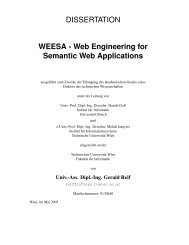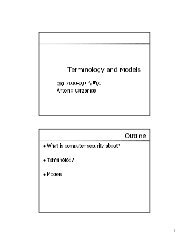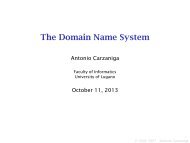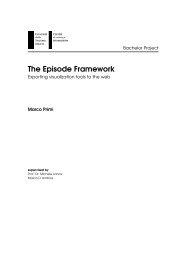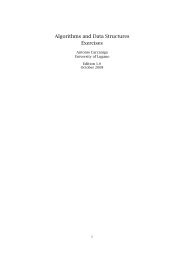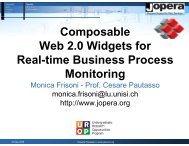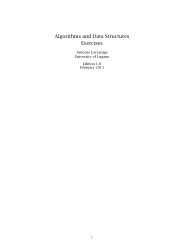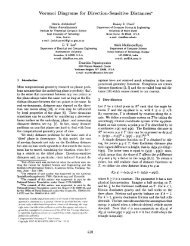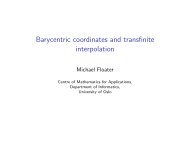Extractive Summarization of Development Emails
Extractive Summarization of Development Emails
Extractive Summarization of Development Emails
You also want an ePaper? Increase the reach of your titles
YUMPU automatically turns print PDFs into web optimized ePapers that Google loves.
• [4] that used a deterministic "fragment quotation graph" and sentences extraction through clue words.<br />
• [7] that tried an abstractive procedure on entire threads, by passing through sentences extraction on single<br />
emails and by exploiting reply chain structure.<br />
• [10] that started with a golden set <strong>of</strong> human generated summaries, individuated important features, and<br />
passed them to a machine learning tool.<br />
We seemed to understand that our choice <strong>of</strong> using extractive summarization is confirmed to be good, because systems<br />
[4] and [10] are more reliable in terms <strong>of</strong> quality <strong>of</strong> the product.<br />
2.4 Speeches<br />
A relatively recent field in summarization research is spoken speeches. Researchers made big progresses in summarizing<br />
conversations treating an individual topic. Less work has been done for unrestricted conversations.<br />
Murray et al. [8] used a sentences extractive approach to demonstrate that conversational features in a machine<br />
learning classification framework produced better results than systems working only on a specific domain. They<br />
set up an experiment by performing in parallel email and meeting summarization. They used logistic regression<br />
classifiers and two corpora: the Enron for the first type <strong>of</strong> summarization and AMI 6 for the second one.<br />
For what concerns the emails, they built a golden set as follows:<br />
1. They selected 39 threads.<br />
2. They hired 5 annotators per thread.<br />
3. The participants were asked to choose 30% <strong>of</strong> the sentences.<br />
4. The participants had to mark each sentence as “essential” or “optional”. The essential ones weighted three<br />
times as highly as the optional ones.<br />
5. They trained a binary classifiers.<br />
For what concerns the meetings part:<br />
1. They had 96 meetings in the training set, 24 in the development test, and 20 for the test set.<br />
2. For each meeting they hired 3 annotators.<br />
3. Every annotator had to wrote abstract summaries and extracted transcript dialogue act segments (DAs).<br />
4. To maximize the likelihood that some data was informative, they considered a DA as positive if it was linked<br />
to a given human summary, otherwise as negative.<br />
To evaluate email threads summaries, they implemented the pyramid precision scheme [2]. To evaluate meeting<br />
summaries, they used the weighted F-measure metric, relying on human produced summaries. The idea is that DAs<br />
linked many times by multiple annotators are most relevant.<br />
Talking more specifically about spoken speeches, they implemented a system called ConverSumm. Such a system<br />
exploits conversational properties <strong>of</strong> different types: Length features, structural features, features related to<br />
conversation participants, and lexical features. The evaluation results showed that some features are effective in<br />
both summarization subjects (like ClueWordScore [4], Sprob which estimates the probability <strong>of</strong> a participant given<br />
a word, T prob which estimates the probability <strong>of</strong> a turn given a word, the length <strong>of</strong> a sentence), while others (such<br />
as if the current participant began the conversation, or normalizing the sentence length by the longest sentence in<br />
the turn) are more informative for emails.<br />
Thus, using multiple summarization techniques, they stated that the system ConverSumm could be effective in<br />
the implementation <strong>of</strong> a unique system working for many conversational subjects (emails, bug report, meetings...).<br />
We inherit also by this paper the choice <strong>of</strong> limiting the number <strong>of</strong> sentences the annotators can selected during the<br />
experiment, and the requirement <strong>of</strong> dividing them into “essential" and “optional". We do not consider instead the<br />
abstractive human generated summaries.<br />
Murray et al. [9] focused their research on automatic summaries <strong>of</strong> business meetings. Assuming that human<br />
abstractive summaries are to be considered as the best possible performance which automatic approaches aim at,<br />
6 http://corpus.amiproject.org/<br />
8



